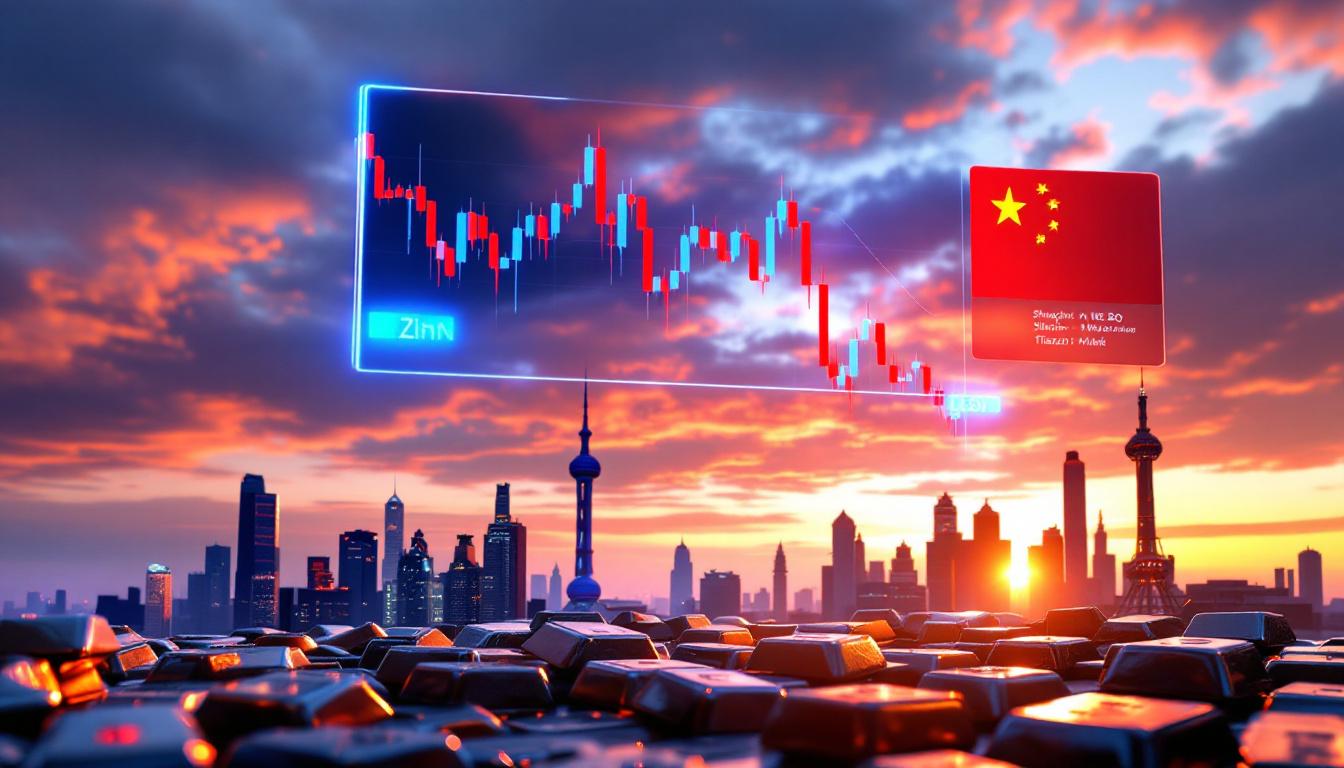How is the Global Monetary System Changing?
The global monetary system is undergoing a fundamental transformation that carries significant implications for investors and economies worldwide. This shift isn't merely theoretical—it's actively unfolding before our eyes, with gold serving as both an indicator and a beneficiary of this transition.
According to financial analysts at Garing & Rosenwag, these monetary shifts aren't random but follow historical patterns that typically repeat every 60-80 years, putting us squarely in a transitional period in the mid-2020s.
The Canary in the Coal Mine: Gold's Warning Signal
Gold's strong performance over the past 12-18 months signals important changes in the global monetary landscape. As a historically reliable indicator of monetary system stress, gold's price movements often precede major economic shifts. The precious metal has been making regular new nominal highs in 2023-2024, suggesting that the current monetary system is under significant pressure.
"Gold has been the canary in the coal mine, clearly signaling monetary regime change," notes Adam Rosenwag in a May 2025 VRIC Media interview. This perspective is gaining traction even among traditional financial institutions that historically downplayed gold's monetary role.
Historical Patterns of Monetary Regime Changes
Monetary regime changes have historically served as catalysts for commodity bull markets. Looking back at 150 years of commodity cycles reveals several consistent patterns:
- Commodities become extremely undervalued relative to financial assets
- Capital flows out of commodities and into technology sectors
- The pendulum eventually swings back toward real assets
- A change in global monetary "plumbing" triggers the new bull market
This pattern has repeated throughout history, from the 1920s to the 2020s, with remarkable consistency. The 1971 Nixon Shock—which ended the dollar's gold convertibility—represents a perfect historical parallel to today's transition, marking a similar inflection point in the global monetary regime change and gold.
What's Driving This Monetary Transformation?
The forces behind the current monetary transformation are multifaceted, combining geopolitical realignments, domestic policy shifts, and structural economic imbalances that have reached breaking points.
Red-Dollarization vs. De-Dollarization
While many analysts expected monetary regime change to originate from BRICS nations (Brazil, Russia, India, China, South Africa) through de-dollarization efforts, the current transformation appears to be coming from within the United States itself—what could be called "red-dollarization" rather than de-dollarization.
This internally-driven shift represents a crucial distinction from previous expectations. Rather than external powers forcing change upon the system, key policymakers within the United States are acknowledging fundamental weaknesses in the current arrangement. With U.S. debt-to-GDP ratios exceeding 130%—levels historically associated with currency crises in other nations—the sustainability of the current system is increasingly questioned.
The Trade-Monetary Connection
The monetary system doesn't exist in isolation—it's intrinsically connected to global trade:
- Monetary systems fundamentally exist to facilitate payments for goods and services
- Trade regime changes often accompany monetary regime changes
- Recent tariff announcements and trade policy shifts signal the beginning of this transformation
- Resources and gold have performed well despite broader market choppiness
"Trade and monetary regimes are two sides of the same coin," explains Rosenwag. "When one shifts, the other inevitably follows." This relationship was demonstrated dramatically during the 1930s when the Smoot-Hawley tariffs coincided with the collapse of the international gold standard.
Official Recognition of Systemic Issues
High-ranking U.S. officials, including the Treasury Secretary and the Chairman of the Council of Economic Advisers, have publicly acknowledged that the current system is unsustainable and requires replacement. This official recognition represents a significant shift in perspective that supports the global monetary regime change and gold thesis.
As one former Treasury official noted in early 2024, "We're no longer debating if the system needs changing, but how quickly we can implement a more sustainable framework."
How is Gold Performing in This New Environment?
Gold has emerged as a primary beneficiary of these monetary shifts, demonstrating remarkable resilience even during broader market volatility.
Gold's Price Performance and New Highs
Gold has been making regular new nominal highs, especially noteworthy given the concurrent strength in the U.S. dollar and elevated real interest rates—factors that historically would have suppressed gold prices. This resilience suggests gold is fulfilling its historical role as a monetary metal during times of systemic change.
The precious metal's performance transcends traditional correlations with inflation, indicating that investors are increasingly viewing it as protection against monetary regime risk rather than simply inflation risk. Recent gold price highs analysis suggests this trend may continue.
The Gold-Silver Relationship: A Critical Indicator
The relationship between gold and silver prices provides important context for understanding where we are in the gold bull market:
- Silver typically lags gold by 2-3 years in the early to middle stages of a gold bull market
- This pattern has been consistent across multiple gold bull markets since 1971
- Silver's underperformance relative to gold is actually a confirmation that the gold bull market remains intact
- When silver finally catches up with a "furious rally," it often signals the end of the gold bull market
"Silver's underperformance confirms the gold bull market is intact," explains Lee Garing. "This pattern has repeated reliably across decades of market cycles."
Historical examples of this pattern include:
- 1971-1973: Silver lagged, then caught up
- 1977-1980: Silver lagged, then surged (partly driven by the Hunt Brothers)
- 2002-2011: Silver underperformed, then dramatically rallied
- 2016-2020: Silver lagged, then caught up in summer 2020
The current gold-silver ratio of over 100 indicates significant potential for silver to eventually outperform gold, possibly returning to historically lower ratios. According to World Gold Council data, central bank purchases of gold reached record levels in 2023, further supporting the monetary metal's fundamental demand.
How Might Silver Perform Going Forward?
Silver's historical relationship with gold creates unique investment dynamics that could lead to extraordinary price movements as the monetary regime change progresses.
The Historical Pattern of Silver's Catch-Up Rallies
Silver's tendency to lag gold during bull markets creates significant potential energy for explosive price movements later in the cycle:
- Silver typically underperforms gold for extended periods (often 2-3 years)
- Eventually stages a "furious catch-up rally" that makes up for years of underperformance
- Often overshoots to the upside, dramatically outperforming gold
- This pattern serves as a sell signal for gold investors
According to recent CFTC Commitments of Traders reports, commercial short positions in silver remain elevated, creating conditions similar to previous silver market squeeze scenarios.
Potential for Market Manipulation and Price Targets
The silver market has historically been susceptible to attempted market corners or squeezes:
- The Hunt Brothers' attempt to corner the silver market in 1979-1980 drove prices from $6 to $50
- The Reddit-driven attempt in January 2021 briefly pushed prices over $30
- Future attempts at market manipulation remain possible given tight physical supplies
"Someone will try to corner the silver market… like the Hunt Brothers in 1979," predicts Garing. "The market conditions are ripe for another attempt."
If historical patterns repeat, silver could potentially return to a gold-silver ratio closer to 14:1 (the ratio established by Alexander Hamilton in the early U.S. monetary system), which would imply significantly higher silver prices from current levels.
Beyond investment demand, industrial consumption of silver continues to grow, particularly in solar panel manufacturing, which uses approximately 100 million ounces annually—roughly 10% of global supply.
What's Happening in the Uranium Market?
The uranium market presents one of the most fascinating case studies in commodity supply-demand imbalances, with a striking disconnect between spot and term markets.
The Disconnect Between Spot and Term Prices
The uranium market presents a unique situation where spot and term prices have diverged significantly:
- Spot price accounts for only 10-20% of total transacted volume
- Term contracts represent approximately 90% of the market
- Historically, spot and term prices moved in lockstep
- This relationship broke down in the past two years
| Price Type | Historical Relationship | Current Situation |
|---|---|---|
| Spot Price | Typically aligned with term price | Recently volatile, ranging from $64-$106 |
| Term Price | Represents 90% of market | Steadily rising to ~$80, near all-time highs |
"The spot market has become completely divorced from industry fundamentals," explains Rosenwag. "It's now a playground for hedge funds rather than a price discovery mechanism." Understanding these uranium market dynamics is crucial for investors.
The Hedge Fund Effect on Uranium Prices
The unusual divergence between spot and term prices can be attributed to hedge fund activity:
- Hedge funds became heavily involved in uranium trading in 2023
- Created a feedback loop using the Sprott Physical Uranium Trust (SPUT)
- Pushed spot prices to a 30% premium over term prices by January 2024
- Subsequently reversed positions and accumulated massive short positions
- This led to spot prices falling while term prices continued rising
The SPUT mechanism created a self-reinforcing cycle: when SPUT traded at a premium to NAV, it raised capital to buy physical uranium, driving spot prices higher, which increased SPUT's NAV and drove shares to a further premium.
Fundamental Improvements in Uranium Demand
Despite spot price volatility, uranium fundamentals have strengthened considerably:
- China announced 10 new reactors beyond their existing 50 planned reactors
- Constellation and Microsoft partnership to reopen Three Mile Island for data center power
- Scattera considering reopening two mothballed AP Westinghouse 1000 reactors
- Data center companies exploring small modular reactors for reliable power
- Molten salt reactor technology gaining renewed interest
- Demand estimates for uranium by 2030 are now 40 million pounds higher than 2018 projections
According to production reports from major producers Cameco and Kazatomprom, global inventories have declined to approximately 18-24 months of consumption, down from 3-5 years of coverage in 2016.
Supply Constraints and Market Outlook
The uranium market faces significant supply challenges:
- Junior uranium companies are heavily shorted on Australian exchanges
- Fundamentals remain strong despite price volatility
- A potential short squeeze could develop in junior uranium stocks
- The term price (representing 90% of the market) remains strong near all-time highs
The OECD Nuclear Energy Agency estimates that production costs for many uranium mines exceed $60 per pound, meaning current spot prices barely cover production costs for many producers—a classic setup for future price appreciation.
What's the Outlook for Oil and Natural Gas?
Energy markets appear significantly undervalued when measured against historical relationships, particularly with gold.
Oil's Valuation Relative to Gold
Oil appears extremely undervalued when measured against gold:
- Currently, an ounce of gold buys 58 barrels of oil
- This is the second-highest reading in a data series going back to 1850
- Historically, the ratio rarely exceeds 30 barrels per ounce
- Only three previous observations have seen the ratio above 40:
- 1933 (Great Depression): 39 barrels per ounce
- January 2016 (end of OPEC market share war): 47 barrels per ounce
- COVID crisis: 80 barrels per ounce (all-time high)
"When you can buy nearly 60 barrels of oil with an ounce of gold, you're looking at an extreme historical anomaly," notes Garing. "These extremes have never persisted." The recent oil price crash analysis provides additional context for understanding these market dynamics.
Supply Dynamics in Non-OPEC Oil
Non-OPEC oil supply growth appears to be slowing dramatically:
- The International Energy Agency (IEA) projects non-OPEC supply growth of 10 million barrels between now and 2030
- Alternative analysis suggests non-OPEC supply growth could reach zero multiple times in this period
- 90% of all non-OPEC supply growth since 2010 has come from U.S. shale
- U.S. shale production appears to be plateauing and potentially rolling over
- This mirrors previous supply disappointments from the North Sea and Cantarell field (2003-2008)
EIA shale productivity reports confirm declining well productivity in key basins like the Permian and Bakken, with new-well production per rig falling approximately 15-20% from peak levels.
Natural Gas Market Dynamics
Natural gas markets face similar supply constraints:
- Nearly all U.S. natural gas supply growth since 2010 has come from gas shales
- Most gas shales have plateaued or rolled over except for associated gas from the Permian
- U.S. LNG export capacity continues to expand despite slowing supply growth
- This could lead to inventory drawdowns and price volatility
- Potential convergence between U.S. natural gas prices ($3.50) and global prices ($11.50)
OPEC+ production quotas have seen compliance rates fluctuating between 75-95%, according to independent monitoring agencies, adding another layer of uncertainty to global supply projections.
Weather Factors and Market Timing
Weather has played a significant role in recent natural gas markets:
- Abnormally warm winters in 2022-23 and 2023-24 kept prices suppressed
- More normalised weather could expose underlying supply-demand imbalances
- Summer heat waves or early winter cold snaps could trigger price spikes
The U.S. National Oceanic and Atmospheric Administration (NOAA) forecasts increased likelihood of La Niña conditions developing in late 2025, which historically correlates with colder winters in key natural gas consuming regions.
Which Other Commodities Show Promise?
Beyond the major commodities discussed above, several niche markets present compelling opportunities for investors willing to research less-followed sectors.
Platinum Group Metals (PGMs)
The platinum group metals market exhibits several attractive characteristics:
- Platinum currently trades around $990 per ounce compared to gold at $3,500
- Historically, platinum has traded at much smaller discounts or even premiums to gold
- Most PGM miners are struggling to make money at current prices
- Industry cannot sustain itself at current price levels
- Market has been left for dead by investors
The fundamental outlook for PGMs is improving:
- Concerns about EV adoption reducing PGM demand appear overblown
- Hybrid vehicles, which use more PGMs than traditional vehicles, are gaining market share
- Hybrids offer superior energy efficiency when considering the full energy cycle
- Hybrid sales are outpacing EVs in many markets without requiring subsidies
"Hybrid vehicles use more PGMs than ICE or EVs," explains Rosenwag. "Toyota's hybrid sales growth has been remarkable, improving fuel efficiency by 30-40% with minimal battery use."
SAE International studies on catalytic converter loadings indicate that modern hybrids use approximately 25-30% more platinum and palladium than traditional internal combustion engines due to more frequent cold-starts. Furthermore, recycling rates for PGMs in catalytic converters hover around 50-60%, meaning substantial amounts of these metals are permanently lost from the supply chain.
Agricultural Commodities
Agricultural markets are showing signs of a potential bull market:
- Agricultural prices peaked in May 2022 after Russia's invasion of Ukraine
- A severe bear market followed until late summer 2023
- USDA overestimated corn and soybean yields by approximately 30%
- January corrections reduced projected ending stocks from near-record to below-average levels
- The 2025 Northern Hemisphere growing season is starting with dry conditions
- Weather forecasts call for drought conditions and a hot summer
Fertiliser stocks present a particular opportunity:
- Fertiliser stocks fell approximately 70% from May 2022 peaks
- Fertiliser prices have begun to increase alongside grain prices
- Major fertiliser companies like Nutrien offer exposure to this potential bull market
- The sector receives minimal attention from investors and financial media
Potash production remains concentrated in Canada, Russia, and Belarus, making it vulnerable to geopolitical disruptions. Nitrogen fertiliser production costs are directly tied to natural gas prices, creating a potential double upside if natural gas prices rise as projected.
What Does This Mean for Investors?
The global monetary regime change creates both risks and opportunities for investors across asset classes.
Portfolio Positioning for Monetary Regime Change
As the global monetary system undergoes transformation, investors should consider:
- Increasing allocation to real assets and commodities (typically 5-10% of portfolios)
- Maintaining exposure to precious metals, particularly gold
- Considering silver as a long-term hold despite near-term underperformance
- Exploring undervalued sectors like uranium
Ready to Spot the Next Major Mineral Discovery?
Don't miss investment opportunities from significant ASX mineral discoveries with real-time alerts from Discovery Alert's proprietary Discovery IQ model. Understand why major discoveries can lead to substantial returns by exploring Discovery Alert's dedicated discoveries page and begin your 30-day free trial today.




